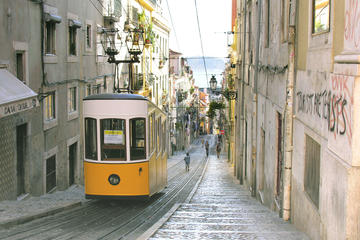
Bairro Alto
Home of Portugal’s mournful
fado singing, Lisbon’s 500-hundred-year-old Bairro Alto (this translates as ‘upper district’) sits at the working-class heart of the city, a district of steep, narrow lanes lined with cramped townhouses and jumping with a quirky mix of stores, barbers’ shops, bars, restaurants and late-night clubs.
By day Bairro Alto’s attractions include the Port Wine Institute – the best place to taste and buy port in Lisbon – and it is accessible from the circular route taken by Lisbon’s famous touristy Tram 28. Don’t dismiss a visit to the Jesuit church of São Roque on Largo Trindade Coelho; built at the height of Jesuit power in Portugal in the 16th century, its bland, whitewashed exterior conceals an interior of breath-taking Baroque indulgence. The riot of ceiling paintings, gilded ornamentation and John the Baptist’s chapel, which is studded with mosaics of ivory, gold and silver, has earned it a reputation as the world’s most expensive church. Adjoining is a small art museum but São Roque really steals the thunder here. The nearby
miradouro (viewing point) in the shady Jardim de São Pedro de Alcântara gives amazing panoramas across Lisbon’s rooftops towards the River Tagus.
By night a different character emerges in the
bairro as the tattoo parlors, bars and cafés open although the weekend street party barely gets going before midnight. Music wafts from
fado bars behind every graffiti-ed façade – if you want to experience authentic
fado, ask a local to recommend a venue as places come and go with amazing rapidity – and edgy Lisboans bar hop from tavern to designer bar in remarkably laid-back high spirits.
Practical Info
Bairro Alto is accessible from Baixa-Chiado metro station or by the Glória funicular from Restaudores Square. Most of the area’s sights are free with the Lisbon Card. The Port wine Institute is open Mon-Fri 11am-12pm; Sat 3pm-12pm. São Roque is open Mon-Fri 8.30am-5pm; Sat-Sun 9.30am-5pm. Admission free.
